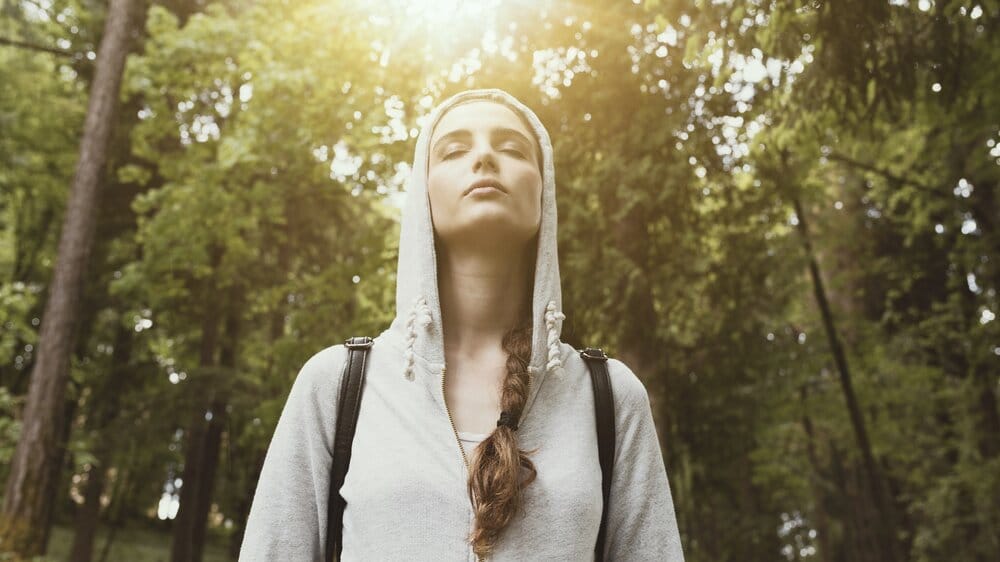The last time you went for a walk outdoors, how engaged were you in the surroundings?
Were you scrolling through social media, replying to a WhatsApp message and listening to a podcast episode, or were you truly taking in the sights, sounds and experiences around you?
Taking a walk outdoors can work wonders for your mental and physical health during lockdown, but to truly embrace the benefits, experts say we must bring our body and minds in sync.
Known as ‘walking meditation’, this type of mindfulness in motion is about more than just getting from A to B.
Rather, it’s an opportunity to clear your mind of any internal worries, by hyper-focusing on the rhythm of your steps and tuning in to what’s going on around you.
What is walking meditation?
Also known as ‘kinhin’, this type of peaceful practice is part of several forms of Buddhism that involve movement and periods of walking between long periods of sitting meditation.
If you struggle with traditional meditation, taking your practice outside gives you an opportunity to harness your awareness and focus on the present, rather than being distracted by internal thoughts, worries or fears.
Proponents often perform a ‘body check’ while walking, noticing how every area of their body feels as they move from foot to foot.
Alongside this, it’s important to tune into what’s going on around you, whether that’s passing cars in a city, or birds tweeting in the countryside.
“Taking mindful moments for yourself whilst exercising is important to help get perspective on your thinking,” says Sarah Romotsky, director of healthcare partnerships at Headspace (headspace.com).
If, like many, you’re struggling to focus on work at the moment, Romotsky says it’s a great tool for improving your concentration and kick-starting your creative mind.
“By incorporating mindfulness into exercising, we can help ground the mind, let go of negative thoughts, and manage the mind-body connection.
Regular meditation trains and re-programms the mind to be more open and less reactive.”
Alongside this, meditation can also enhance empathy, increase your attention span and help you to sleep better at night.
“It’s also scientifically proven to help alleviate stress and increase happiness,” Romotsky adds. “It allows you to take a step back from stressful situations, pause the mind and feel better in the moment.”
How can you do it at home?
Although it’s called a walking meditation, Romotsky says that doesn’t mean we’re walking around on autopilot or with our eyes closed.
“Instead, walking meditation is mindfully walking using a meditative technique, with eyes open, and at a pace that suits you, with our attention on the immediate setting around us.”
She adds: “Try meditating by focusing attention on the environment around you, taking in all the sights, sounds and smells – particularly those you would not normally notice.
“Whilst moving, your attention should be focused on the act of doing and the sensations your body is experiencing. This can prevent distracting and stressful thoughts, helping you to refresh the mind, and tune into the rhythm of the body.”
It’s also common for people to first do sitting meditation in a private space, using an app like Headspace, and then take their meditative state outdoors on a walk. This is a great way to ease yourself into the practice.
“If you can’t get outside right now, moving around your house, room by room , can also be an effective mode of physical and mental exercise.
“While walking around in your home, be sure to check in with your body and how it feels. Is it heavy or light, stiff or relaxed, and how are you carrying yourself? Tune into what’s going on around you in your surroundings.”





